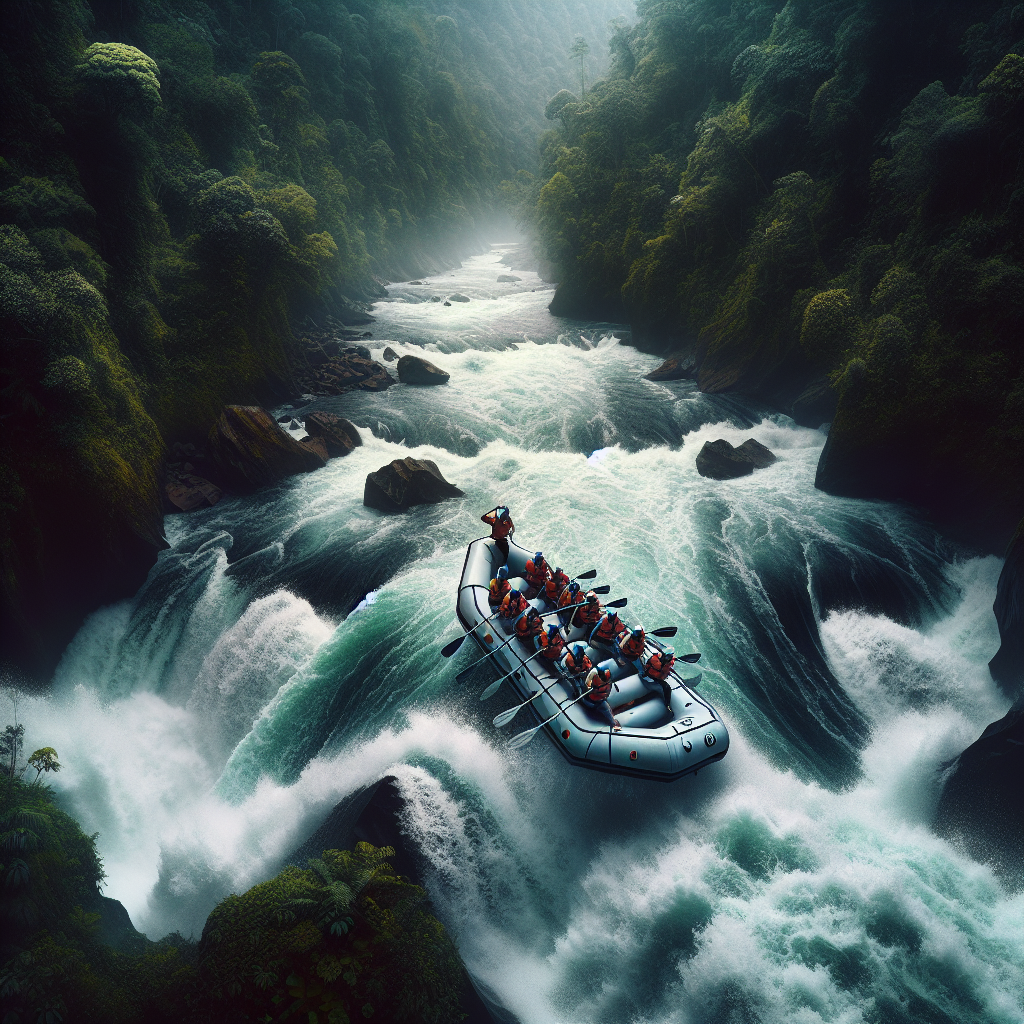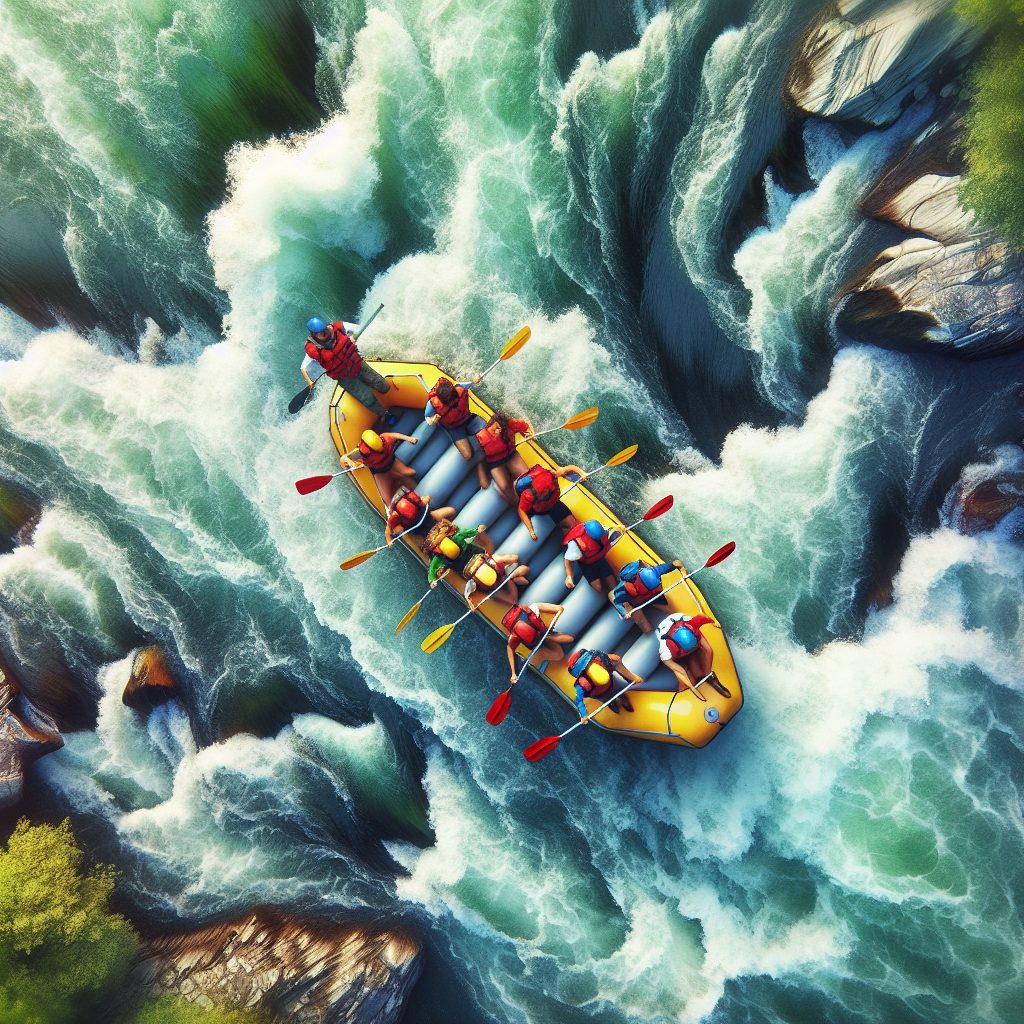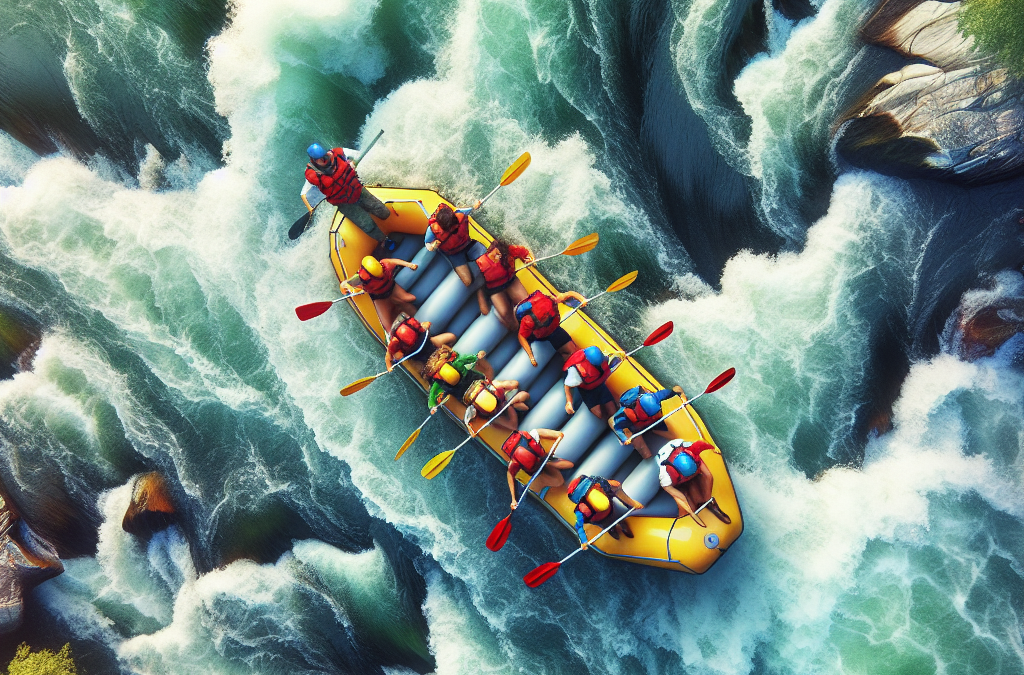Get ready to get soaked and test your mettle against the power of nature in this thrilling ride known as white-water rafting! “White-Water Rafting: A Guide to Rapids and Rivers” is an enriching article that equips you with the vital know-how on navigating the world’s wildest waters. This guide brims with useful insights on understanding the classification of rapids, choosing the right type of river for your adventure level, and essential safety precautions you need to take note of. Prepare to embark on an exhilarating journey that seamlessly blends adrenaline, outdoor activities, and breathtaking natural scenarios.
Understanding White-Water Rafting
White-water rafting is an exhilarating and adventurous outdoor activity that involves navigating down a river in an inflatable raft. The ‘white-water’ part refers to the frothy and often turbulent water churned up by rapid current and rocks in the river.
Definition of White-Water Rafting
White-water rafting is all about navigating across exciting river currents and rapids using an inflatable raft. This sport not only challenges your endurance but also your teamwork and ability to adapt in a dynamic environment.
History and Origin
The history of white-water rafting dates back to the mid-19th century when the first rubber raft was created. It wasn’t until the mid-20th century, though, that it became a popular recreational activity. Its origins can be sourced back to the United States, where it was initially developed as a form of transport across secluded mountainous territories.
Significance and Popularity Today
Today, white-water rafting is an extremely popular outdoor activity. It not only provides a healthy adrenaline rush but also offers an opportunity to explore and appreciate nature’s picturesque landscapes. Additionally, it has become a popular team-building activity due to the high level of cooperation and coordination required.
Types of White-Water Rafting
White-water rafting can be categorized into a few different types, depending on the location and the level of difficulty.
River Rafting
River rafting involves riding down the river’s natural flow in a raft. You encounter mild to moderate rapids that require physical strength and group coordination.
Creek Rafting
Creek rafting, on the other hand, involves navigating through narrow waterways. It’s typically much more challenging since it requires better navigation skills and the ability to handle steeper drops.
High Water Rafting
High water rafting is for the thrill-seekers! This type occurs when the water levels are at their peak and the river becomes more tumultuous. This form of rafting requires more technical skills and experience.

Understanding Rapids
Rapids are fast-flowing, turbulent sections of a river, marked by high waves, swirling water, and rocky outcrops. They are the heart and soul of white-water rafting.
Definition and Significance of Rapids
Rapids are essentially fast-flowing waters on a river course that are caused due to obstructions like rocks or inclines on the riverbed. They are crucial to white-water rafting, offering the challenge and the rush that makes the sport appealing.
Classifying Rapids according to International Scale of River Difficulty
Rapids are primarily classified according to the International Scale of River Difficulty. This system ranks the difficulty of rapids on a scale of one to six; class one being the easiest with small waves and clear channels, and class six being extraordinarily challenging and highly dangerous.
How to Navigate Through Rapids
Navigating through rapids involves understanding the rapid’s flow pattern, maneuvering the raft with precision, and lots of teamwork. It’s essential to keep an eye on the ‘V’ in the water — this typically represents the simplest route through the rapid.
Top White-Water Rafting Locations
Finding the right location for your white-water rafting experience can add enormously to your adventure. These are some of the top locations around the world.
Best White-Water Rafting Sites in North America
North America offers some of the most iconic rafting locations. The Colorado River in the Grand Canyon, for instance, boasts multiple rapid classes along with breathtaking vistas. Similarly, the Gauley River in West Virginia offers a challenging rafting experience with over a hundred rapids.
Top White-Water Rafting Locations in Europe
Europe offers diverse rafting opportunities. The Tara River in Montenegro and Bosnia and Herzegovina offers deep canyons and beautiful turquoise waters. Meanwhile, the Soča River in Slovenia, with its various rapid classes, is great for both beginners and experienced rafters.
Recommended Locations for White-Water Rafting in Australia and New Zealand
Franklin River in Tasmania, Australia, offers a truly wild rafting experience, replete with both tranquil pools and wild rapids along a multiday trip. On the other hand, the Kaituna River in New Zealand, with its impressive 7-meter Tutea Falls, offers the highest commercially rafted waterfall in the world.

Safety Precautions in White-Water Rafting
As much fun as it is, white-water rafting does entail certain risks. Therefore, it’s vital to remember some safety guidelines.
Importance of Safety in White-Water Rafting
The unpredictable nature of rivers makes safety crucial in this sport. Being well-prepared and respecting the river can make the difference between a good day and a bad one.
Basic Safety Rules
Never go rafting alone; always go with an experienced guide or a professional rafting company. Always wear your helmet and life jacket. Learn proper paddling techniques, commands, and what to do if you fall out of the raft.
Using Safety Equipment and Gear
Good quality equipment can significantly increase your safety during white-water rafting. This includes tough inflatable raft, protective helmet, life jacket, waterproof clothes, and suitable shoes.
Preparing for a White-Water Rafting Trip
Before setting off on a rafting adventure, some preparation can go a long way.
Physical Fitness Requirements
While white-water rafting can be enjoyed by people of varying fitness levels, a reasonable level of physical fitness and stamina can enhance the experience. Activities like swimming, jogging, and strength training can help you prepare.
Skills and Knowledge Required
Along with physical fitness, you need some basic paddle skills, the ability to follow commands quickly, and knowledge about navigating through rapids.
What to Bring and Wear
Remember to bring waterproof clothing, a change of clothes, water shoes, sunscreen, and bottled water. It’s advisable to wear quick-drying clothing and avoid cotton.
Impact of Weather and Seasons on White-Water Rafting
Weather and seasons have a significant impact on white-water rafting experiences, affecting water levels and flow rates.
Effects of Rain on Rivers and Rapids
Rain can turn a calm river into a white-water thrill ride. However, too much rain can lead to dangerously high water levels, making it unsafe for rafting.
Best Seasons for White-Water Rafting
The ideal season varies depending on the part of the world. Generally, the spring and summer months offer the most pleasant rafting conditions.
Managing Unexpected Weather Changes
Being prepared for weather changes is essential. Check the weather forecast before you head out, and always listen to your guide.
Environmental Considerations and Respect
White-water rafting, like any outdoor activity, has an impact on the environment. It’s important to respect the natural surroundings and minimize your footprint.
Impact of White-Water Rafting on the Environment
White-water rafting has the potential to impact the surrounding environment if not conducted responsibly. Erosion, littering, disturbance to wildlife, and exacerbation of natural events can occur if proper care is not taken.
Ecotourism and Conservation Practices in White-Water Rafting
Many rafting companies practice ecotourism by guiding participants to respect the natural environment, minimize their impact on the ecosystem, and contribute to local economies.
Responsibilities of Rafters Towards the Environment
Rafters should adopt ‘leave no trace’ principles—disposing of waste properly, minimizing campfire impacts, respecting wildlife, and being considerate of other visitors.
White-Water Rafting for Beginners
If you’re new to white-water rafting, don’t worry! It’s an inclusive sport, and there are plenty of opportunities for beginners.
Recommended Rapids for Beginners
Beginners should start with class one or two rapids — these offer enough excitement for a first-time rafter while being fairly safe and easily navigable.
Essential Skills for Beginners
Basic teamwork skills, the ability to swim, and an understanding of basic paddling techniques are essential for novices.
Tips and Recommendations for first-time rafters
Remember to listen to your guide, paddle in sync with your team, always wear your life jacket and helmet, and most importantly, have fun!
Advanced White-Water Rafting
For experienced rafters looking for a bigger challenge, advanced white-water rafting provides just that.
Challenges in Advanced White-Water Rafting
Advanced rafting requires perfect navigation through complex rapids, as well as excellent physical fitness and sharp teamwork. You should expect higher waves, possible drops, and tight passages that demand expert maneuvering.
Recommended Rapids for Expert Rafters
Class four to six rapids are designed for experienced rafters seeking an adrenaline rush. However, remember that class six is exceptionally dangerous and should be attempted only with highly skilled individuals.
Additional Skills Needed for Advanced Rafting
Advanced rafters need excellent swimming skills, quick decision-making ability, advanced paddle skills, exceptional strength and stamina, and thorough knowledge of safety and rescue procedures.
White-water rafting is an exhilarating journey through the heart of nature. Whether you’re a beginner dabbling in the gentle rush of class one rapids or a seasoned rafter taking on the tumultuous class six, the experience is sure to be unforgettable.
So, gather your buddies, strap on a helmet, and embark on a white-water rafting adventure. Just remember to respect the river, keep safety a prime concern, and most importantly, enjoy the ride!

